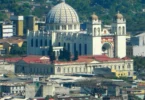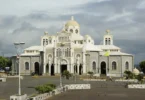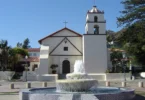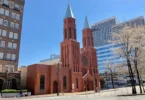Introduction
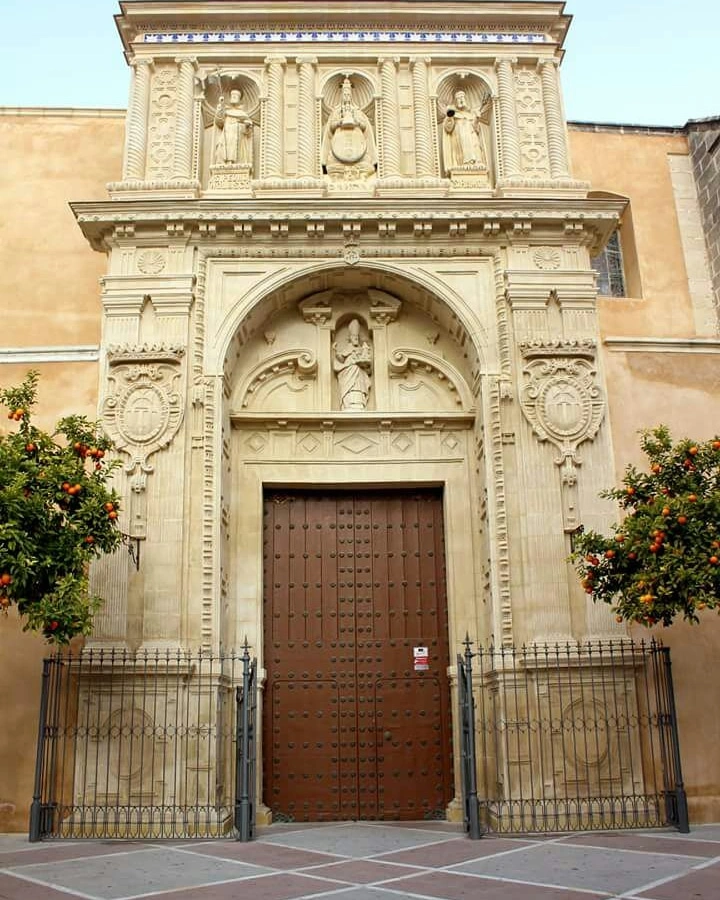
The Basilica of Our Lady of Mercy (Basílica de Nuestra Señora de la Merced) is a prominent Roman Catholic church situated in the Plaza de la Merced, in the historic city of Jerez de la Frontera, Spain. This sacred site is an integral part of the Monastery of La Merced, which belongs to the Mercedarian Order, a Catholic religious community founded in the 13th century with a mission centered on the redemption of Christian captives. Recognized as a Historic-Artistic Monument by the Diocese of Jerez de la Frontera, the basilica represents a significant architectural and cultural landmark. Originally constructed in the Gothic style, the church later underwent renovations, receiving a Baroque façade in the 17th century, which gives the building much of its current visual character. Inside, the basilica boasts a rich artistic heritage, including an exceptional collection of altarpieces, sculptures, liturgical objects, and ornamental decorations, reflecting centuries of religious devotion and artistic expression. Among its most notable features is the Chapel of Riquelme, which houses the tomb of Miguel Primo de Rivera, the Spanish military officer and dictator who ruled Spain from 1923 to 1930. His burial site adds a layer of historical and political significance to the basilica, making it not only a place of worship but also a location of national historical memory.

Earliest Historical References
The earliest documented reference to the Monastery of La Merced in Jerez de la Frontera dates back to the year 1348. At that time, records already mention the existence of a primitive building associated with the Mercedarian community, indicating that the order had established a presence in the area prior to that date.
Estimated Date of Foundation
While the exact year of the monastery’s foundation remains uncertain, historians generally agree that the Mercedarian Order likely settled in Jerez sometime between 1317 and 1345. This estimation is based on socio-political developments in the region, particularly the outcome of the Battle of Río Salado in 1340, in which Christian forces defeated the Benimerines (Marinids) of North Africa. This decisive victory ushered in a period of relative peace in the region, leading to the expansion of the city beyond its defensive walls. As the threat of invasion diminished, religious communities and civilians began establishing buildings in the extramuros (areas outside the city walls), which is likely when the Mercedarians constructed their first monastery.
Traditional Account of the Foundation
According to long-held local tradition, the monastery’s foundation is attributed to Saint Peter Pascual, a revered Mercedarian bishop and martyr. Though this claim lacks strong historical documentation and is not supported by the latest scholarly research, it remains an enduring part of the monastery’s spiritual and cultural legacy.
Architecture of Basilica of Our Lady of Mercy, Jerez de la Frontera, Spain
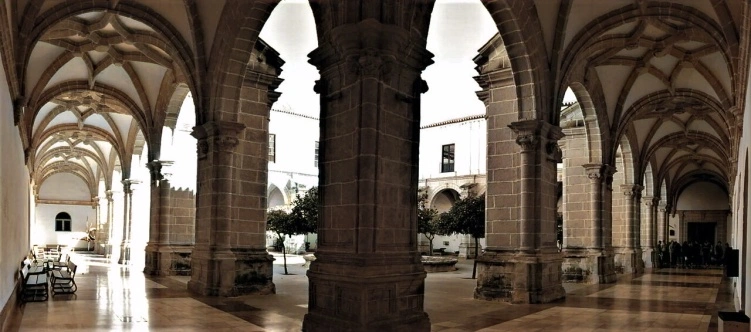
Architect : Pere Blai
Architectural style : Gothic architecture
Architectural Development and Artistic Contributions
Construction of the Cloister (16th–17th Century)
While work on the basilica itself progressed, a major architectural undertaking began with the construction of a new cloister to replace an earlier, more modest structure. The project was initiated in 1548, with the construction contract specifying that it should be completed between April 1 and November 1, 1549, at a cost of 60,000 maravedís, a significant sum for the time. Fernando Álvarez, a Portuguese architect, was commissioned to oversee the design and execution of the cloister. Álvarez innovatively combined Gothic architectural elements, such as the ribbed vaults, with Renaissance styles, particularly visible in the form and proportions of the cloister’s columns and arcades. This project is historically notable as the first cloister in Jerez to incorporate Renaissance aesthetics, marking a transitional moment in the city’s architectural evolution. Work continued beyond Álvarez’s death and was not completed until 1614, demonstrating the scale and ambition of the construction.
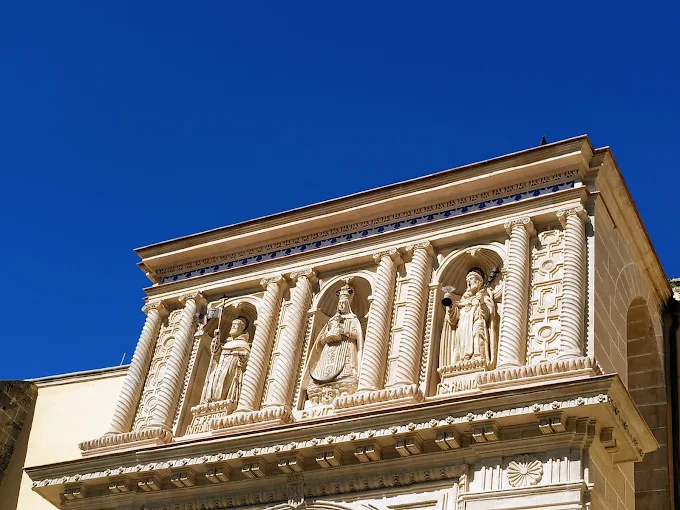
Baroque Transformation: Façade, Altarpiece, and Staircase
The Façade (17th Century)
In the 17th century, the basilica underwent a significant transformation with the addition of a Baroque façade, designed by the architect Fernández Calafate. This façade was built atop the original Gothic structure, blending stylistic elements in a manner typical of the Spanish Counter-Reformation period. It was restored in 2016 to preserve its decorative and symbolic details. Originally, a bell tower rose above the basilica’s main entrance, but it was demolished at an unspecified date. A bell gable still crowns the roof, though it is not visible from the adjacent streets, giving the church a more subdued external profile.
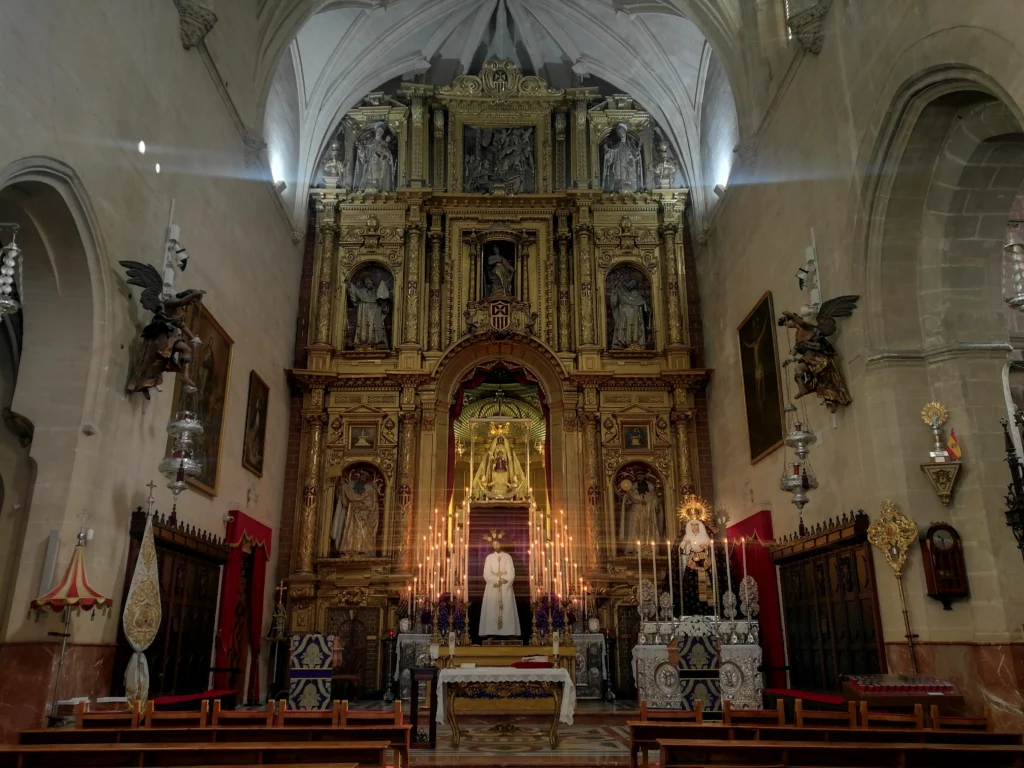
Main Altarpiece
Inside, the church’s artistic centerpiece is the main altarpiece, an elaborate Baroque composition created by Francisco Dionisio de Ribas. Crafted with intricate detail, the altarpiece serves not only as a focal point for worship but also as a reflection of the rich religious and artistic patronage of the Mercedarian community.
Baroque Staircase (18th Century)
In the 18th century, construction activity in the monastery continued with the addition of a second floor to the cloister and the building of a sumptuous Baroque staircase, begun in 1749 and completed in 1750. This staircase, made from red limestone embedded with marine fossils, is a masterpiece of Spanish Baroque interior design. At the base of the handrail is an extraordinary sculptural element: a mythological androesphinx (male sphinx), symbolizing wisdom, protection, and mystery—likely reflecting the intellectual and spiritual values of the monastic community.
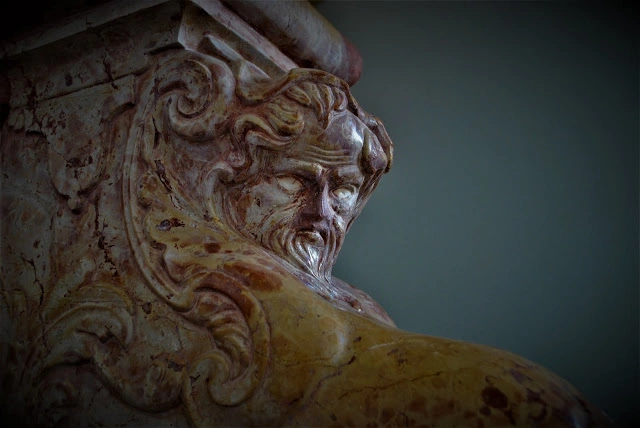
Turmoil and Secularization in the 19th and 20th Centuries
Napoleonic Invasion and War Disruptions (1810)
In 1810, the arrival of Napoleonic troops in Jerez forced the Mercedarian friars to abandon the monastery. The religious complex was commandeered by French forces and repurposed as military barracks. As a result, the church was closed to public worship, and its sacred artworks and icons were transferred to the Hermitage of Santiago for protection. The brief Trienio Liberal (1820–1823) under General Riego led to the closure of the monastery once again, further interrupting religious life and community services at the basilica.
Mendizábal Confiscation and Civic Use
The Mendizábal Confiscation—a wave of Spanish ecclesiastical property seizures in the 1830s—stripped the monastery of its religious functions. The property was converted into a municipal hospital, while the basilica continued in service as a hospital chapel. After the hospital ceased operations in 1975, the building was repurposed once again and now serves as the Santa Isabel de Hungría Secondary School, demonstrating the adaptive reuse of religious heritage spaces in modern Spain.
Ecclesiastical Recognition
In June 1949, Pope Pius XII officially elevated the Sanctuary of Our Lady of Mercy to the status of a Minor Basilica, recognizing its historical, artistic, and devotional significance within the Diocese of Jerez de la Frontera.
Devotion to Our Lady of Mercy

The Patron Saint of Jerez
The basilica is home to the revered image of Nuestra Señora de la Merced (Our Lady of Mercy), who holds the title of Patron Saint of Jerez. This statue is venerated with profound devotion and is central to many of the city’s most important religious celebrations. She is carried in solemn procession through the streets in a magnificent gold and silver palanquin, crafted by Juan Díaz de Mendoza in 1648, a masterpiece of Spanish goldsmithing.
Historical Background
The origin of her patronage dates back to the 14th century, shortly after the Mercedarians settled in Jerez following its reconquest by the Kingdom of Castile. The community established itself in a location somewhat removed from the Hermitage of Santiago, which then stood on the outskirts of the city. By the early 15th century, the Virgin had gained wide public devotion, with her presence recorded in religious events as early as 1410. After a long process of recognition, she was canonically crowned in 1961. Her crown was temporarily loaned in 1968 but was later returned to the basilica.
Popular Legends and Local Tradition
Mercedarian Founding Legend
A well-known local legend, preserved in old manuscripts from the Mercedarian archives of Jerez, recounts a miraculous discovery at the site of the future monastery. It is said that the land once housed a tile and brick factory, where an old kiln used for firing ceramics remained intact. As workers began demolishing the kiln to lay the monastery’s foundation, they discovered a hidden niche within. Inside it stood a blackened image of the Virgin Mary, darkened by years of smoke. The miraculous discovery was interpreted as a divine sign and helped inspire the Mercedarian community to build their monastery on that very spot.
Sacred Relics and Religious Celebrations
Holy Shroud and Relics
The basilica possesses a replica of the Holy Shroud, brought to Jerez in 1572. Alongside it are housed ten other sacred relics, which contribute to the church’s spiritual prominence and attract both pilgrims and scholars.
Holy Week Processions
The Hermandad del Transporte, one of Jerez’s brotherhoods, conducts its Palm Sunday procession from the basilica. The event forms part of the city’s elaborate Semana Santa (Holy Week) observances, during which numerous processions commemorate the Passion of Christ through religious art, music, and ritual.
The Virgin of the Rosary
The basilica also hosts the Virgin of the Rosary, who is especially venerated by foremen and costaleros—those who carry the religious floats in processions. This highlights the basilica’s ongoing role as a living center of faith and devotion in the city’s cultural and religious life.
Feast Day
Feast Day : 24 September
The feast of the Virgin of Mercy, patroness of Jerez de la Frontera, Spain, is celebrated annually on September 24. It is one of the city’s most important religious events, featuring a novena starting on September 16, a solemn mass, and a traditional procession through the streets of Jerez. This celebration reflects the deep devotion of the city to Our Lady of Mercy, dating back to the 13th century.
Church Mass Timing
Yet to Update
Church Opening Time:
Monday, Tuesday : 8:00 am – 1:00 pm, 6:30 pm – 7:30 pm
Wednesday to Sunday : Closed
Contact Info
Address : Basilica of Our Lady of Mercy
C/ Cristal, s/n, 11404 Jerez de la Frontera, Cádiz, Spain.
Phone : +34 956 34 23 45
Accommodations
Connectivities
Airway
Basilica of Our Lady of Mercy, Jerez de la Frontera, Spain, to Jerez Airport, distance 13 min (15.0 km) via A-4.
Railway
Basilica of Our Lady of Mercy, Jerez de la Frontera, Spain, to 11406 Jerez de la Frontera, distance between 11 min (5.9 km) via Av. Rey Juan Carlos I.



